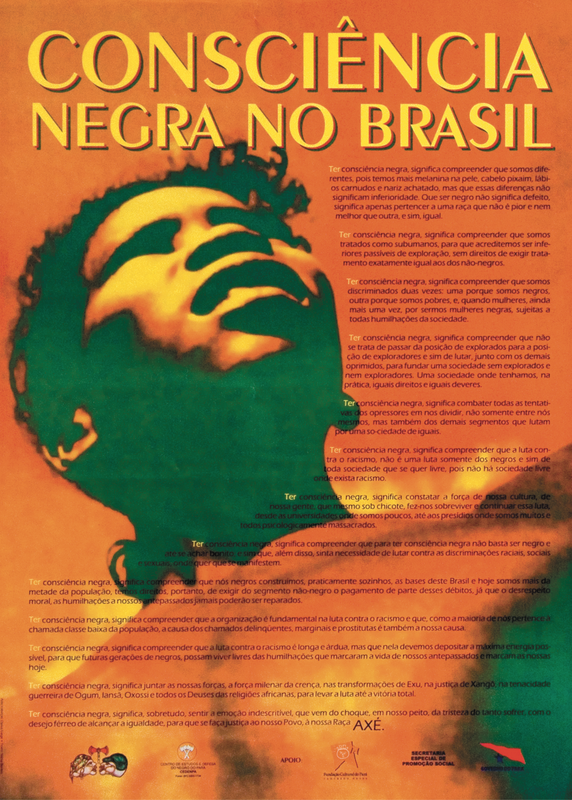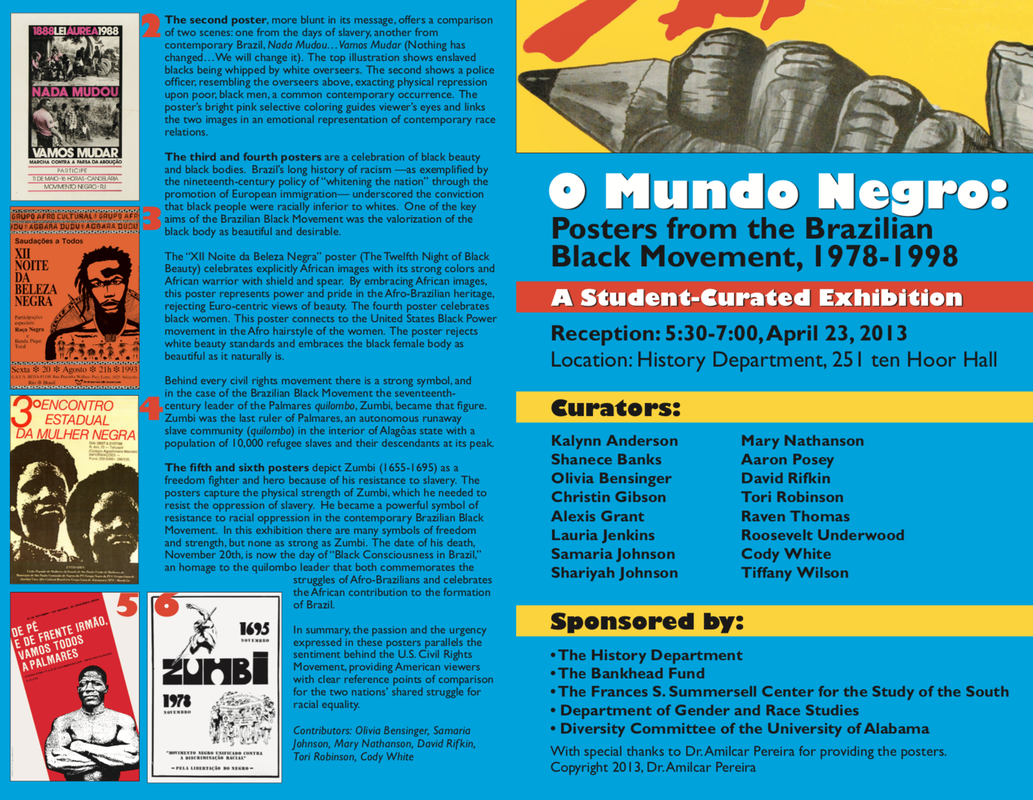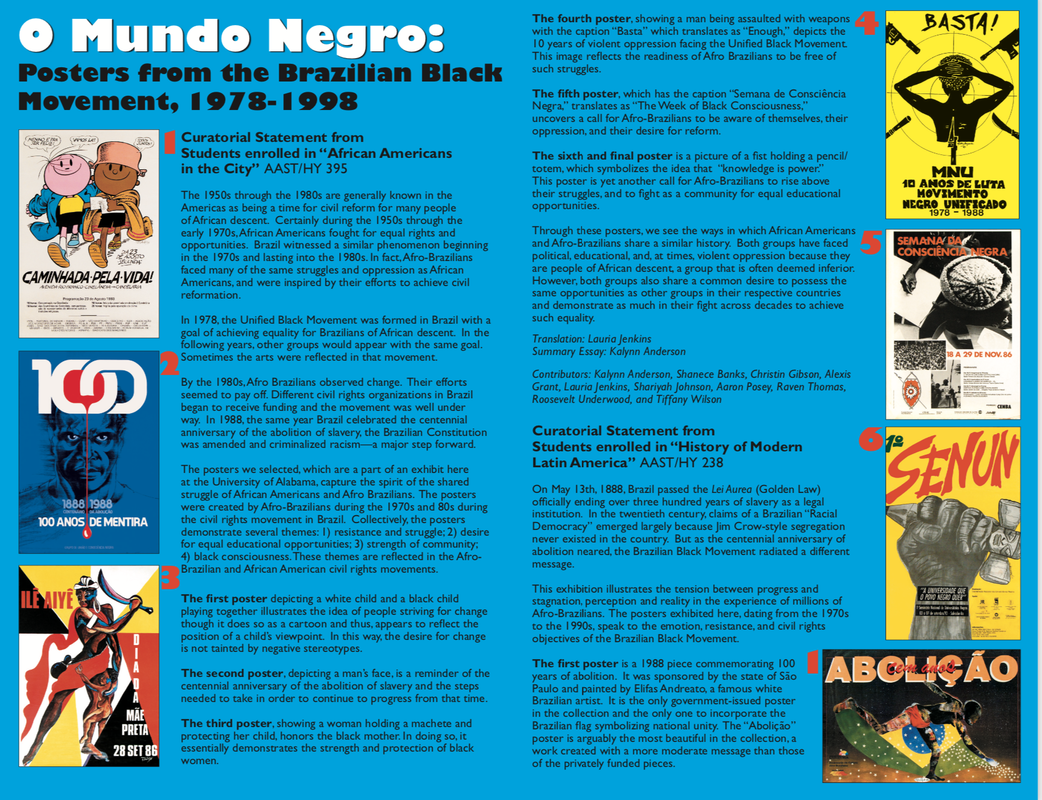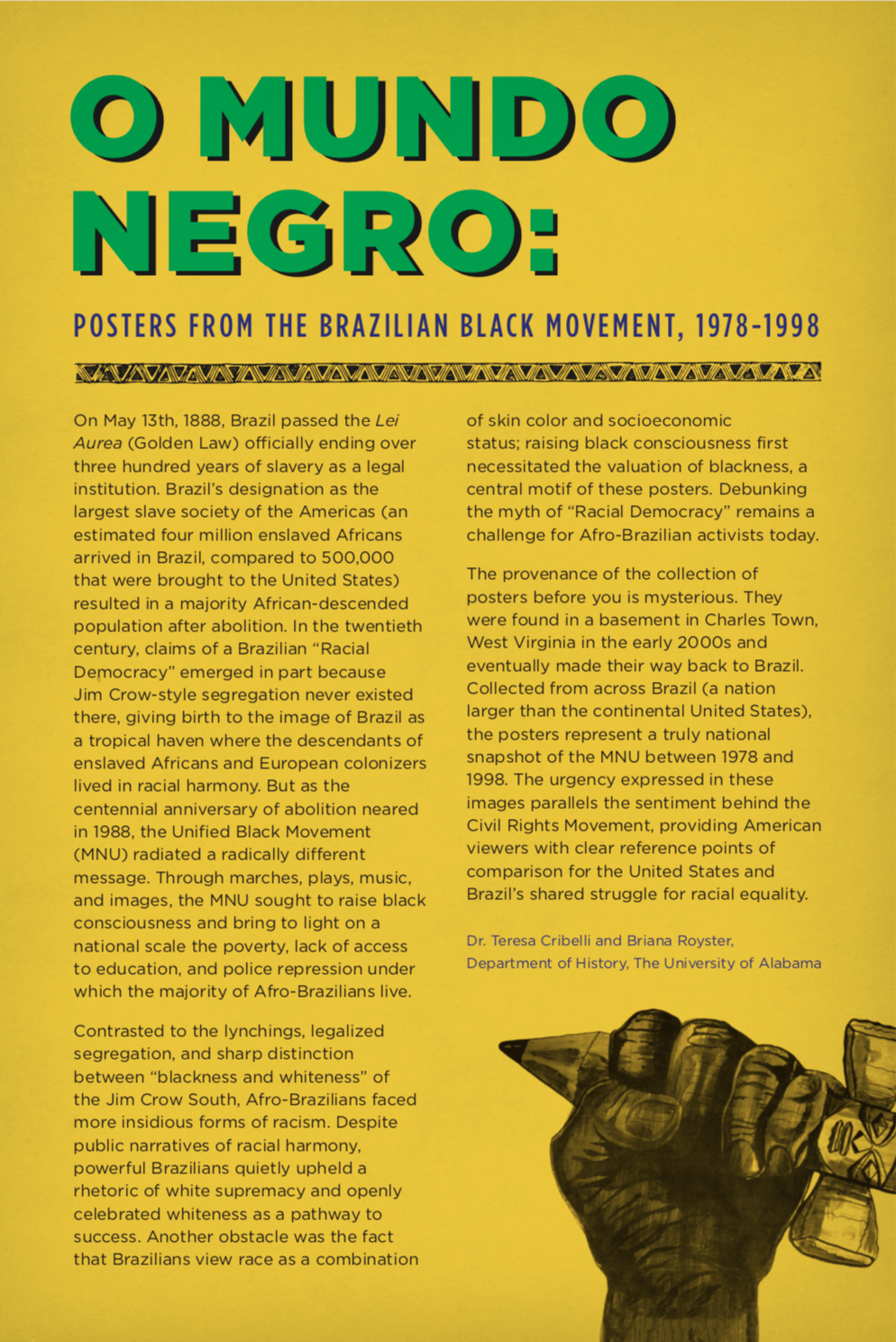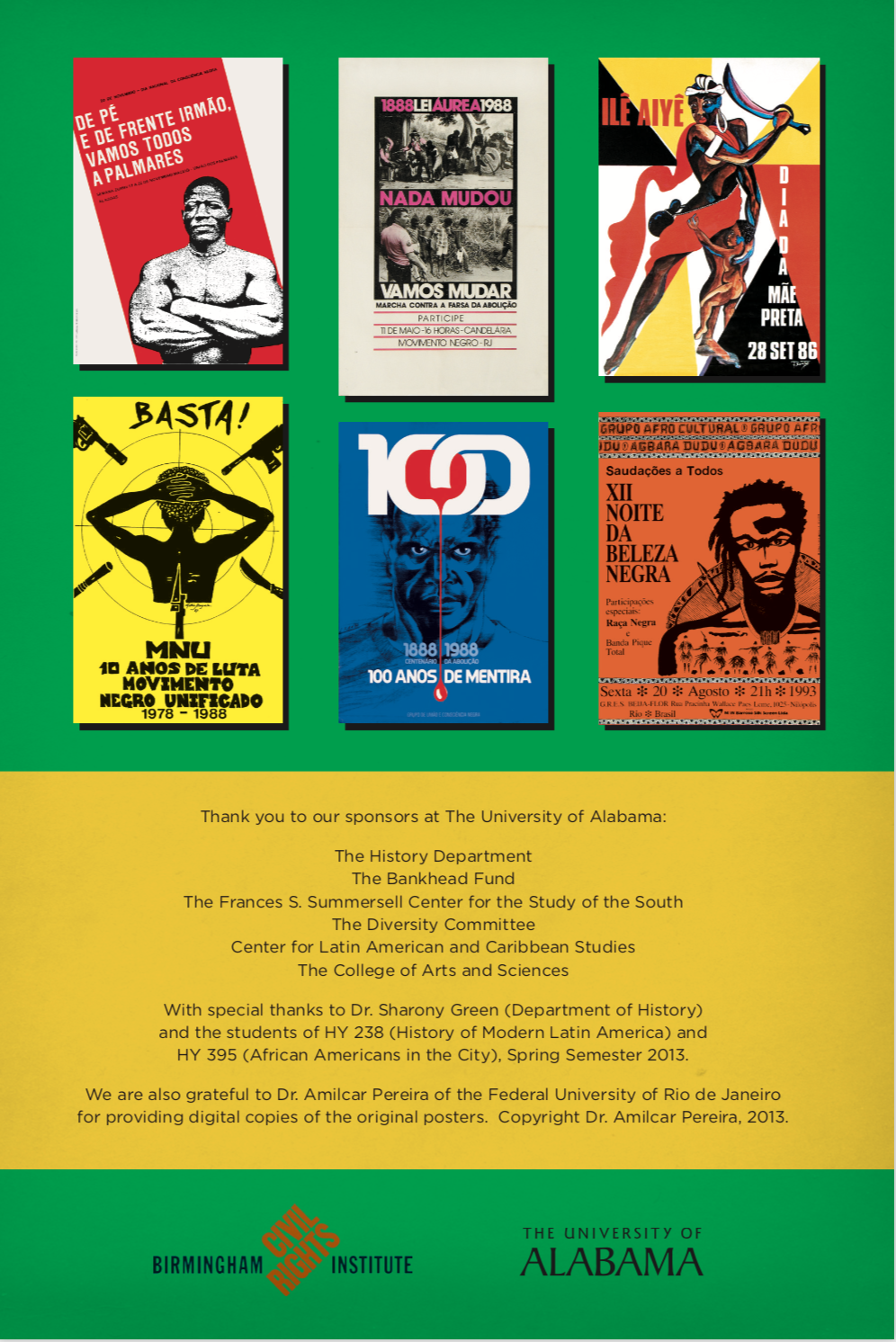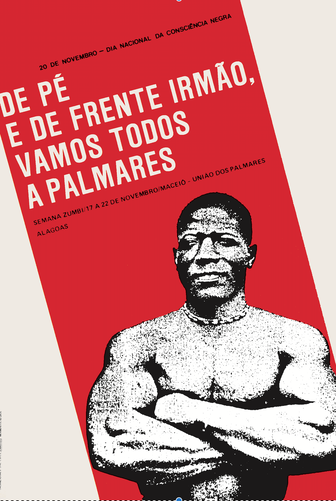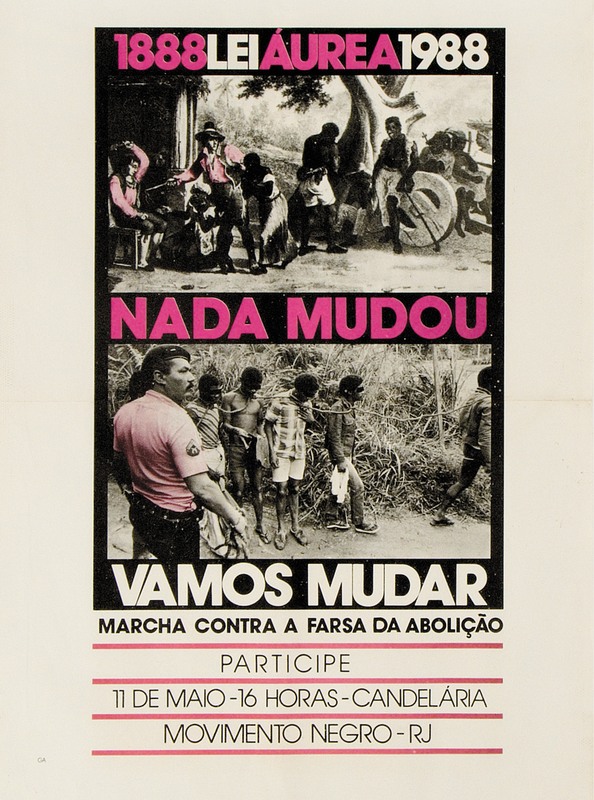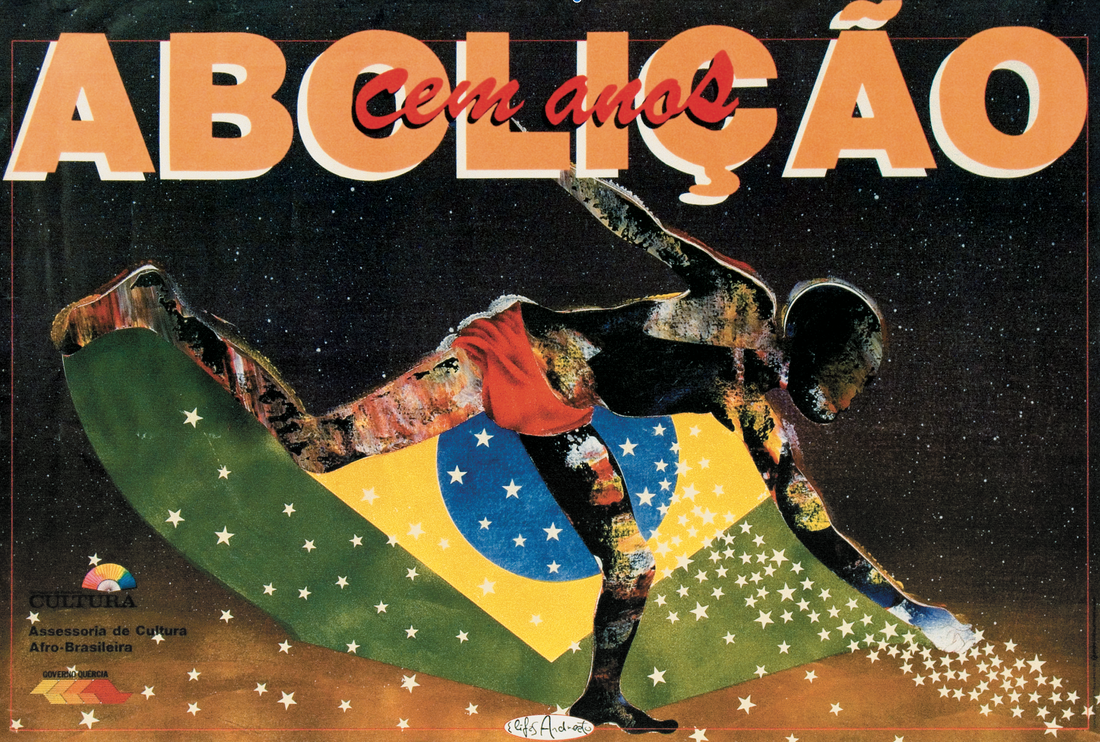Process
Together, Dr. Green and I divided printed scans of the twenty-four posters into two groups and arranged for our undergraduate classes (Dr. Green’s African Americans in the City and mine, History of Modern Latin America) to curate each set. In our respective classes, we met with students and had them select six posters to display for the exhibition. Students decided on all aspects of curation. They discussed which posters would be most representative of the different voices of the Black Movement, and how they could be arranged to tell a compelling visual narrative. After the selection portion was complete, students divided into smaller groups, selected one poster each, and wrote a portion of the curatorial statement for their poster. Dr. Green and I then wove together the curatorial statement (the exhibition brochure for the 2013 exhibition held in the History Department and Gorgas Library at the University of Alabama is in the following slides)
Together, Dr. Green and I divided printed scans of the twenty-four posters into two groups and arranged for our undergraduate classes (Dr. Green’s African Americans in the City and mine, History of Modern Latin America) to curate each set. In our respective classes, we met with students and had them select six posters to display for the exhibition. Students decided on all aspects of curation. They discussed which posters would be most representative of the different voices of the Black Movement, and how they could be arranged to tell a compelling visual narrative. After the selection portion was complete, students divided into smaller groups, selected one poster each, and wrote a portion of the curatorial statement for their poster. Dr. Green and I then wove together the curatorial statement (the exhibition brochure for the 2013 exhibition held in the History Department and Gorgas Library at the University of Alabama is in the following slides)
|
Challenges
Overall, the project went very smoothly. I had my reservations about dividing up the curatorial statement among the undergraduates, but the students more than rose to the occasion and did a great job working on their sections; the statement came together almost seamlessly. Probably the biggest hurdle was interpreting a visual culture that is quite different from that of the U.S. for students and viewers alike. A few discussions I had with students focused on the following: |
Challenge 1.
One of the central themes of the Brazilian Black Movement was linking twentieth-century activism to slave resistance. A recurring figure in the posters is Zumbi, the historical leader of Palmares (right), a seventeenth-century runaway slave community that numbered 10,000 by the time of its destruction by the Portuguese Army. Students felt like the poster, De Pé e de Frente, Irmão, Vamos Todos a Palmares (Step by Step, Brother, We Will All Arrive in Palmares), was too aggressive and focused on Black men as physically dominating. We discussed how Afro-Brazilians saw this image as celebrating black strength in a nation that has done little to acknowledge blackness in a positive way. We also discussed how in comparison, the U.S. Civil Rights Movement, for the most part, did not reference slavery or leaders of slave revolts. |
Process Cont.
In 2015, my MA student, Briana Royster, approached the Birmingham Civil Rights Institute about holding an exhibition based on the posters. The BCRI agreed and O Mundo Negro became the first non-U.S. Civil Rights Movement to be featured at the institute. Together we expanded the original student exhibition with more detailed historical context for each poster. We also each gave a brief lecture on different aspects of Afro-Brazilian history and the Black Movement on the opening night of the exhibition. |
Challenge 2.
- Many of the posters in the exhibition focused on abolition and what had not changed in the intervening 100 years in Brazil since the legal end of slavery in 1888. Two posters in particular were quite dramatic in emphasizing how little abolition had done to address historical inequality or even spur national conversations about how to include Afro-Brazilians as full citizens of the Brazilian nation. Again, references to slavery were explicit, as the poster to the left indicates. The top scene is a famous illustration of slave punishment by a European traveler in Brazil in the 1830s. The photo below was taken in 1983, and highlights police brutality in the state of Rio de Janeiro. Entitled, "1889-1988, The Golden Law (abolition): Nothing has Changed - We will Change it. March against the Falsehood of Abolition," the poster forces the viewer to witness the continuation of violence against Afro-Brazilians.
Takeaways
This class project and the exhibition raised awareness about slavery and its legacy across the Americas for students and viewers. Students were largely unaware of the scope and scale of slavery and its legacy in Brazil, the largest slave-holding nation in the Western Hemisphere. By discussing the visual language and tactics of the Brazilian Black Movement both groups left with an understanding about how slavery and its legacy resonates far beyond the borders of the U.S. Students also learned how activism takes different forms (the Black Movement was more dependent on cultural expressions of Black Identity in music and visual imagery, for example, than the Civil Rights Movement). I also found that looking at the Black Movement in Brazil provided a safe distant mirror for discussing these topics in a U.S. context. I encourage more comparative projects bringing Latin American perspectives and the U.S. together as a way to understand the wider world and ourselves.
This class project and the exhibition raised awareness about slavery and its legacy across the Americas for students and viewers. Students were largely unaware of the scope and scale of slavery and its legacy in Brazil, the largest slave-holding nation in the Western Hemisphere. By discussing the visual language and tactics of the Brazilian Black Movement both groups left with an understanding about how slavery and its legacy resonates far beyond the borders of the U.S. Students also learned how activism takes different forms (the Black Movement was more dependent on cultural expressions of Black Identity in music and visual imagery, for example, than the Civil Rights Movement). I also found that looking at the Black Movement in Brazil provided a safe distant mirror for discussing these topics in a U.S. context. I encourage more comparative projects bringing Latin American perspectives and the U.S. together as a way to understand the wider world and ourselves.
